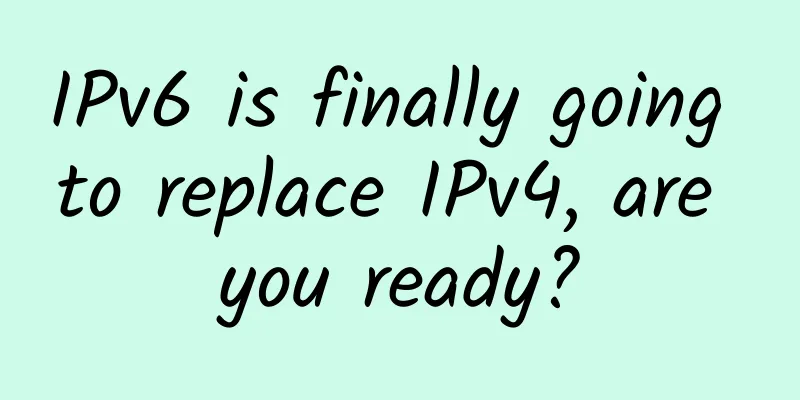Let’s not talk about technology, but business scenarios: Huawei’s fully cloud-based network enables digital transformation

|
[Original article from 51CTO.com] At the recently concluded 2017 Huawei Global Analyst Conference, Wei Feng, Chief Marketing Officer of Huawei's Network Product Line, announced that Huawei will achieve full cloudification of its networks. In the tide of digital transformation, Huawei will work more closely with operators, corporate customers, and upstream and downstream industries to jointly embrace the cloudification transformation of networks. The reporter learned that Huawei's network product line has just completed integration. On the basis of the previous IP, transmission and access, the switch and enterprise gateway product lines have been integrated to form a complete network for the future. From the perspective of the network requirements deployed by operators, except for the wireless network, which has not been integrated yet, all other infrastructure-related product lines are already in this network. Why and how did Huawei adjust its network product line in this way? In what direction will the adjusted network product line evolve? What can a fully cloud-based network do? How to help customers achieve digital transformation? Faced with these questions, Wei Feng, Chief Marketing Officer of the Network Product Line, Hu Kewen, President of Huawei's Switch and Enterprise Gateway Product Line, and Gao Ji, President of Huawei's Transmission Network Product Line, answered them from their respective perspectives. Through their sharing, the reporter fully understood Huawei's vision and persistence in the wave of digital transformation. Huawei hopes to seize the opportunity of industrial upgrading and bring the best business experience, more agile business innovation, and ubiquitous security protection to operators, corporate customers, and industry customers based on a fully cloud-based enterprise network architecture. Why Huawei doesn't talk about technology: a dumpling restaurant
Wei Feng, Network Product Line Marketing Officer Wei Feng talked about the original intention of network cloudification from the perspective of changing customer needs. He said that telecom operators previously provided dedicated line services, bandwidth services, and voice services, but in the future, telecom operators' profit focus will shift to B2B services and cloud services. Under the general trend of shifting customer needs, the original network architecture, concepts, and strategies will naturally change accordingly. In order to help operators, enterprise/industry customers seize the opportunities of digital transformation and expand their business territory, Huawei has launched a comprehensive cloud network. "Through our contacts, we found that operators don't care about SDN, NFV and other technologies. What they care about is the business model, cost, and open experience." Because of this, Huawei's All-Cloud Network was born. After the network is clouded, more attention is paid to the customer's new business model, operation model and thinking habits. This is also the core starting point for Huawei to propose a comprehensive cloud network, which is also different from the previous ones. He gave a very vivid example, a telecom operator is like a dumpling restaurant. Technologies such as SDN and NFV solve internal management and control problems. They can make dumplings faster and taste better, but they cannot guarantee that the dumpling restaurant can make more profits. The focus of the dumpling restaurant operators is how to make profits in the business model. For example, can the menu provide DIY? In addition to selling dumplings, can dumpling skins or dumpling fillings be sold separately? When customers come to order food, are there any set meals that can be sold together? These are business issues, not technology-solvable. What Huawei needs to do is to allow telecom operators to see more business application scenarios and help dumpling restaurants realize more business value. "If a dumpling restaurant has only a few customers every day, and two chefs can only make 30 dumplings an hour, then what's the point of telling them that you have advanced technology that can make 500 dumplings an hour? No matter how good, automated, and agile the SDN behind it is, if there is no business linkage, the subsequent efficiency will actually be high cost, and operators will not pay for it at all." So how to solve customers' business problems? In the All-Cloud network, Huawei configures multiple business packages in the components, and provides the experience accumulated by Huawei in the telecommunications industry to operators or industry customers in a cloud manner. At present, 8 specific Cloud solutions have been implemented. The final brain is the Network Cloud Engine, the business enablement engine on the cloud. Wei Feng emphasized that the All-Cloud Network embodies the most prominent features of network cloudification - agility, intelligence, efficiency, and openness. It allows customers to quickly use the service capabilities of Huawei's cloud network to combine the business packages they need to achieve. 12345 fully cloud-based network architecture helps enterprises achieve digital transformation In the next five to ten years, traditional industries will enter a critical period of digital transformation to promote business innovation and growth. Data shows that since 1955, 88% of the world's top 500 companies have disappeared or withdrawn from the top 500. Since 2000, about 50% of the companies that have disappeared from the top 500 are due to inaction in digital transformation. Digital transformation has become an important guarantee for the commercial success of enterprise customers. Enterprise digital transformation requires more than just the application of new technologies such as cloud computing, SDN/NFV, and customers need to make changes in business models, operating models, and thinking models. Based on this, Huawei has proposed a fully cloud-based network architecture to bring a "Whole Journey, All Digital" experience.
Hu Kewen, President of Huawei's Switch and Enterprise Gateway Product Line Hu Kewen used "12345" to summarize the characteristics of Huawei's comprehensive cloud network architecture for the enterprise market. 1 is a fully cloud-based network architecture; 2 refers to the fact that the fully cloudified network brings two values: value to end customers and value to service providers. Hu Kewen introduced to reporters in detail the different values that the fully cloudified network brings to enterprise customers and service providers: For enterprise customers, the fully cloudified network can provide customers with a full digital experience from ordering to use. For service providers, the fully cloudified network can provide cloud service support covering the "full life cycle" including planning, deployment, optimization and operation and maintenance. 3 refers to the three layers of the fully cloud-based network architecture, namely: ubiquitous connectivity, open cloud platform, and social industry applications. Each cloud-based network solution is the implementation of the three-layer architecture in a specific scenario. 4 refers to the four networks in the solution: data center network, branch network, campus network, and Internet of Things; 5 refers to four networks plus ubiquitous security, which constitute a comprehensive cloud network solution. "New technologies and new business models are profoundly changing all industries. Huawei hopes to organically combine the evolution of new technologies and business needs around application scenarios, shifting from technology-driven to business-driven, and helping enterprises achieve digital transformation and business success by providing a fully cloud-based network," concluded Hu Kewen. Understanding CloudOptiX, the Evolution of Next-Generation Transport Networks If the previous two speakers talked more about the future development of Huawei's fully cloud-based network from the perspective of its original intention and strategic planning, Gao Ji talked more about the implementation level and the changes he felt during his contact with operator customers. The star product is Huawei CloudOptiX, which creates a minimalist transmission network and embraces the full cloudification of the network.
Gao Ji, President of Huawei's Transmission Network Product Line Gao Ji said that Huawei predicts that by 2021, the east-west traffic driven by data center interconnection will increase sixfold, and the north-south traffic driven by business will also increase fourfold. Under this trend, the transport network faces two main pressures: First, the bandwidth is growing rapidly, and the backbone and metropolitan area networks are facing rapid expansion, which requires rapid expansion and the growth of traffic. Through "OTN+OXC" to build a mesh backbone network, "OTN to CO" to build a metropolitan area simplified bearer network, reconstruct the basic network architecture, and meet the business requirements of massive bandwidth and low latency; second, how to migrate the traditional old network to the new network? How to ensure the smooth migration of existing network services to the new MS-OTN? Huawei's approach is to use MS-OTN to undertake SDH service access and SDH cross-connection, and use MS-OTN to make operation and maintenance management deployment simpler. In addition, how can the transport network become more flexible and adaptable to development? Huawei's approach is to further adapt cloud technology and provide customers with end-to-end full life cycle services through the Network Cloud Engine, which includes planning simulation, management module, control module, and analysis module. The Network Cloud Engine has three functions: ***, to achieve rapid service provisioning. Unlike dedicated line services, which often take several months to deploy, the Network Cloud Engine control module makes services agile and reduces the deployment cycle to just a few minutes. Second, the Network Cloud Engine management module can realize resource visualization and resource pooling concepts. Third, achieve efficient operation and maintenance. Gao Ji gave an example. In the operator's operation and maintenance team, can a 400-person operation and maintenance team be reduced to 4 people? The Network Cloud Engine network analysis module can maintain a larger network with fewer people through service automation. According to Gao Ji's description, building a future-oriented CloudOptiX simplified transmission network for operators can help customers effectively resolve the challenges brought by services to future networks and support customers in achieving commercial success. By building a mesh backbone network with "OTN+OXC" and building a metropolitan integrated bearer network with "OTN to CO" to reconstruct the basic network architecture, customers can build a future-oriented, one-hop simplified network architecture. Combined with the full life cycle management platform Network Cloud Engine, the various functional units of "planning, management, control, and analysis" are connected to form a closed loop. Through design-to-delivery, full network visualization, business agility, and operation and maintenance automation, operation and maintenance can be simplified and efficiency can be improved. The reporter also learned that as of 2016, Huawei has jointly carried out more than 300 commercial practices of network cloudification with global operators and enterprise customers, involving commercial scenarios such as operator wide area networks, data center networks, enterprise campuses and IoT. In the operator market, it has obtained more than 70 commercial contracts and carried out joint innovation and commercial experiments with many operators such as Vodafone, Telefonica, and Deutsche Telekom. In the enterprise market, it has achieved successful commercialization for more than 200 customers, including Internet, finance, government, medical care, education, transportation and other fields, covering more than 50 countries and regions around the world. [51CTO original article, please indicate the original author and source as 51CTO.com when reprinting on partner sites] |
<<: Top 10 patent reexamination invalidation cases in 2016 including Xidian Jietong & Sony
>>: Juniper CEO: The strategy driving Juniper's general direction is cloud
Recommend
Ten pictures and five questions to help you thoroughly understand Kafka architecture tuning
1 Do you know how Kafka's ultra-high concurre...
Shen Bin from CAICT: 5G factories promote high-quality development of "5G+Industrial Internet"
In August 2022, the Ministry of Industry and Info...
In 20 days, Huawei delivered a miniature version of a smart city
Every spring, various summits come one after anot...
Interviewer asked: What are the functions of the wait and notify methods in threads?
1. Introduction In the previous thread series art...
Building a native cloud to truly realize the benefits of NFV
The goal of network function virtualization in th...
Liu Yulin from the Ministry of Industry and Information Technology: Gigabit optical network is the supporting base of new infrastructure
On March 29, at the "Gigabit Optical Network...
OneTechCloud VPS quarterly payment 20% off starting from 64 yuan/quarter, US CN2 GIA/CN2 High Defense/Hong Kong CN2/Japan CN2 and other lines
OneTechCloud is a Chinese hosting company founded...
RG-CT7526 series cloud terminal released: ARM architecture hardcore warrior, performance soared 107%
In recent years, the rapid development of domesti...
MoeCloud New Year Promotion: San Jose CN2 GIA monthly payment 15% off, annual payment 30% off
MoeCloud has launched a Spring Festival promotion...
RAKsmart: VPS/cloud server from $19.9/year ($0.99/first month), 1Gbps unlimited traffic server from $89/month, multiple data centers available in the United States/Hong Kong, etc.
RAKsmart continued to launch a number of activiti...
The new infrastructure will release new momentum. How will these seven major sub-sectors develop?
Recently, the Standing Committee of the Political...
Network security attack and defense: wireless network security WEP
[[392852]] The WEP (Wired Equivalent Privacy) pro...
How to create a new financing model for product-based IT
As technology departments move away from traditio...
LOCVPS Los Angeles CN2 line XEN architecture is online, Los Angeles/Osaka, Japan 30% off
The Spring Festival holiday is coming to an end. ...
6 SD-WAN Challenges and Benefits
Software-defined WAN (SD-WAN) has obvious advanta...









